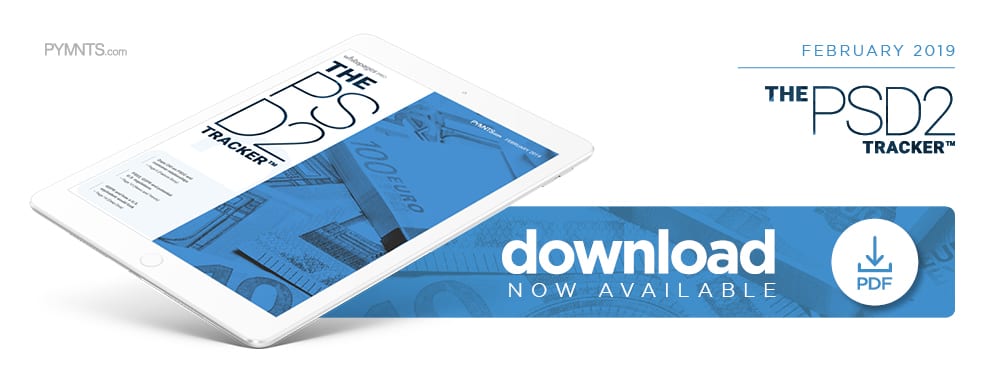How PSD2 Is Changing Lending In The UK

 PSD2 launched in January 2018 and has been active in the European Union for a little over a year now, meaning that banks, merchants and customers are becoming used to it and its accompanying data privacy law, GDPR. Because of these new regulations, however, businesses of all types are seeing their relationships with their customers change.
PSD2 launched in January 2018 and has been active in the European Union for a little over a year now, meaning that banks, merchants and customers are becoming used to it and its accompanying data privacy law, GDPR. Because of these new regulations, however, businesses of all types are seeing their relationships with their customers change.
Customers may be comfortable browsing the internet or making financial transactions on their smartphones, but, due to growing concerns over data safety, they’re not necessarily comfortable sharing their phone numbers or bank credentials. Additionally, third-party providers and retail merchants are showing greater interest in how data transparency, which is mandated by open banking and PSD2, may give them a larger stake in customer relationships.
Signing up for a new financial product or service needs to remain as convenient and secure as possible if third-party providers want to gain the trust and loyalty of modern consumers, said Didier Baclin, chief innovation officer of U.K.-based P2P loan provider Zopa, in a recent interview with PYMNTS.
“There’s always that question around data, and [if] people are really going to share this type of data with [us],” Baclin said of Zopa’s products, which include a new income verification service for its loans that was developed in partnership with fellow U.K. company, TrueLayer. “But we saw that when there was a clear gain for customers — in this case, having that frictionless experience — people are willing to go through and share their data with you.”
Security, verification and the benefit of data
Bank data that was previously siloed became accessible to Zopa under PSD2, which represented a beneficial opportunity for its customers. The company was one of the first to partake in the open banking ecosystem and, according to Baclin, maintaining top-notch security was high priority as it worked toward a more seamless user experience. A host of tools were used to make its loan application process simpler, and the overall experience ended up much different than how it had originally been.
“Traditionally, people would have had had to upload a pay slip or some such information to prove that they indeed have the salary that they declared, but using open banking … you can opt-in to the old way or the new way,” he said, adding that the company saw an “overwhelming response” from customers who were willing to share data.
After opting-in, customers can share their bank credentials and gain immediate access to the loan they’ve requested, Baclin said, “because [Zopa’s] been able to verify your information automatically.” He was quick to add that data security was made visible to foster consumer trust — they understand exactly how their data is protected.
Moreover, PSD2’S data transparency mandate has created a more level playing field for challengers like Zopa.
“A few years ago, you can imagine the case of the big incumbent bank. They have, say, 10 million customers and a lot of rich data, but for those customers to opt-in to a different financial provider, it might not have always felt that easy,” he said. “Having access to the data that they have with their banking partner allows us to accelerate that opt-in … It may have been different in the past when that data operability just didn’t exist.”
Data availability is also changing how companies approach customer data when it comes to making products. Zopa is utilizing data transparency to create a money management app that will provide customers with insight on their spending, the way they’re managing debts and other financial tasks. The company plans to beta test the app sometime this year.
A key factor to note when it comes to this data is the changing role of the customer, Baclin said. The potential use cases and insights that can be collected are only possible with the customer’s consent.
“The amount of data has increased, but it’s increased one-to-one with the customer’s consent,” he stated. “We can’t just ask an incumbent bank … to please give [Zopa] all of the customer data about anyone. That doesn’t happen today, and I don’t see it happening ever.”
As money movement and data transparency become more established under PSD2 and open banking, Baclin believes there will be a demonstrative effect on the relationships between merchants and consumers.
PSD2 and the merchant relationship
With PSD2, merchants and customers can explore new ways of transacting, specifically when it comes to payment initiation and strong customer authentication (SCA), which will become effective this September. According to Baclin, push payments are bound to be an area of particular interest.
“Acquiring costs for merchants are quite large today. [With push payments,] you could be on a merchant’s website and you could have the option to say, ‘Hey, pay me through your bank directly and if you do that, maybe I’ll give you a percent off, because that’s actually the money I save.’ That’s something that I would expect merchants to try,” he said.
Though some companies were quick to implement PSD2, SCA may take merchants longer to incorporate. The increased security that comes with SCA may decrease conversions for transactions over 50 euros, Baclin said. The silver lining, however, is that there will be less fraud cost for merchants and banks alike.
PSD2 and the future of open banking
Merchants, banks, consumers and third-party providers will all need to keep a careful eye on PSD2 and any other new regulations that may become effective around the world. With the playing field leveled, the technologies that companies use to keep the customer experience frictionless will become even more integral to success, Baclin stated. It’s there that third parties and startups may have a leg up over incumbents.
“As we build new technology, we are thinking, ‘What is the new regulation that’s coming down the pipe?’ Even if it’s not there today,” he said. “We have [the ability] to make those changes in a way the incumbents just cannot match.”
As PSD2 further establishes itself in the EU’s banking ecosystem, how relationships between merchants, banks and customers will change remains to be seen. It is clear, however, that data will continue to be essential in the future.
